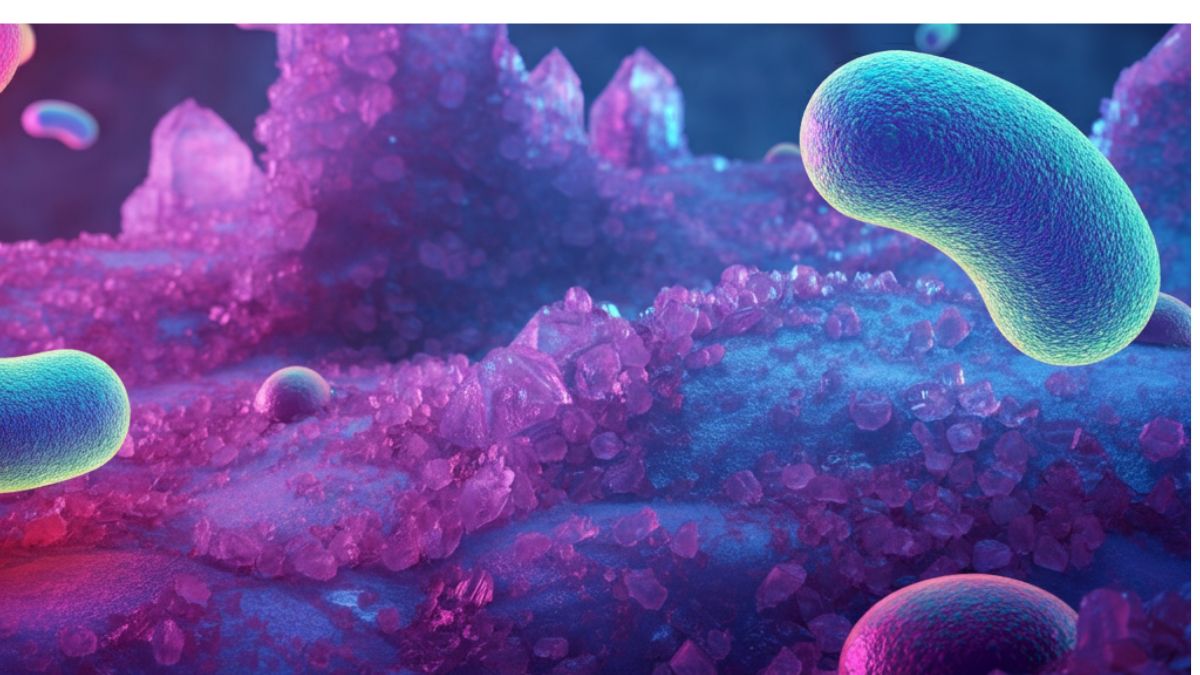Most life on Earth thrives in conditions we would consider moderate—temperatures, salinity, and acidity all suited to our biological comfort zones. But what about organisms that survive, or even thrive, in extreme environments? One fascinating category of extremophiles is halophilic bacteria, microorganisms that live in environments with incredibly high salt concentrations. From salt flats to hypersaline lakes, these remarkable creatures possess adaptations that challenge our understanding of biology and open doors to groundbreaking applications in science and industry.
This blog dives into the world of halophilic bacteria, exploring how they survive the salty extremes, where they can be found, and their benefits in areas ranging from biotechnology to medicine.
What Are Halophilic Bacteria?
Halophilic bacteria belong to a group of extremophiles—organism that live in extreme environmental conditions. Specifically, halophiles (from the Greek words “halos,” meaning salt, and “philos,” meaning loving) thrive in environments where the salt concentration can exceed 5%, with some species tolerating up to 30% NaCl (sodium chloride).
These bacteria fall into two categories:
- Moderate halophiles thrive in medium salt concentrations (5-20% NaCl).
- Extreme halophiles flourish in hypersaline environments (20-30% NaCl or more).
Interestingly, halophilic bacteria can adapt to hypertonic conditions that would desiccate most living organisms. Their survival strategies make them a key subject of scientific research.
Where Do Halophilic Bacteria Live?
Halophilic bacteria inhabit some of the harshest environments on the planet. These sites often lie far from human habitation, yet they are rich with microbial life. Common habitats include:
- Salt Flats and Salt Crystals: Found in locations like Utah’s Bonneville Salt Flats or Bolivia’s Salar de Uyuni, these ecosystems are defined by high salt density resulting from evaporation.
- Hypersaline Lakes: Bodies of water such as the Dead Sea, Great Salt Lake, or Lake Assal house vibrant halophile populations.
- Salt Mines and Rock Salt Deposits: Salt mines host halophiles thought to be remnants of ancient seas, surviving in crystals for thousands of years.
- Industrial Brines: Environments created by salt evaporation ponds and saline waste from desalination plants are hotspots for halophilic bacteria.
How Halophilic Bacteria Survive in High-Salt Environments
Salt is crucial for life but only in moderate amounts. For the average microorganism, hypersaline conditions create a significant challenge. High concentrations of salt draw water out of cells via osmosis, leading to desiccation and cellular collapse. Yet halophilic bacteria overcome these obstacles with innovative biological strategies:
1. Salt-In Strategy
Extreme halophiles maintain high intracellular salt concentrations to match the salinity of their environment. This prevents water from leaving their cells. However, their proteins and enzymes must adapt to function optimally in such salty conditions.
2. Osmoprotectants (Compatible Solutes)
Moderate halophiles create compounds known as osmoprotectants or compatible solutes, such as glycine betaine and trehalose. These molecules stabilize cellular structures and balance osmotic pressure without interfering with biological processes.
3. Specialized Cell Walls
The cell walls of halophilic bacteria are uniquely adapted. They incorporate negatively charged polar residues to repel Na+ ions and prevent them from disrupting the cells’ biochemistry.
4. Protein Adaptations
The proteins of halophiles are highly acidic, with a surface charge that stabilizes their structure in saline environments. Enzymes from halophilic bacteria are particularly valuable for industrial purposes, as they remain active in extreme conditions.
The Benefits and Applications of Halophilic Bacteria
Scientists and industries worldwide are studying these bacteria for their unique properties and potential applications. Here are some of the most promising areas where these salt-loving microbes are making waves:
1. Biotechnology and Enzyme Production
Halophilic bacteria produce enzymes that are stable and effective under extreme conditions, which makes them invaluable in industrial processes such as:
- Bioremediation to treat saline wastewater or oil spills.
- Food Production for fermentation or enhancing flavors in high-salt products.
- Detergent Industry, where halophilic enzymes can be added to salt-based detergents for effective cleaning.
2. Biofuels
Certain halophilic microbes like Halanaerobium species can produce biohydrogen, a clean energy source. Given global demands for sustainable energy, incorporating halophiles into biofuel production pipelines is a promising avenue.
3. Medical and Pharmaceutical Fields
Halophilic bacteria secrete biologically active compounds that have been shown to exhibit:
- Antibacterial, antifungal, and antiviral properties.
- Potential use in anticancer and antioxidant therapies.
For instance, carotenoid pigments produced by halophiles have demonstrated potent antioxidant properties, which are particularly useful for pharmaceutical applications.
4. Astrobiology
The hardy nature of halophiles has sparked interest among astrobiologists studying extraterrestrial life. Their survival in extreme salty conditions on Earth offers clues as to how life might thrive on planets or moons with hypersaline environments, such as Mars or Europa.
5. Agriculture
Halophilic bacteria can enhance saline soil productivity by promoting plant growth. Their ability to tolerate salt can be harnessed for developing salt-resistant crop biofertilizers, potentially aiding areas where soil salinization limits farming.
Challenges in Studying Halophilic Bacteria
Despite their exciting potential, working with halophilic bacteria comes with challenges:
- Their culture requires hypersaline environments, which can complicate lab setups and increase costs.
- Extracting enzymes and compounds from halophiles sometimes requires specialized biochemical workflows.
- DNA manipulation is more difficult due to their unique genomes and proteins.
Advancements in synthetic biology and gene-editing technologies such as CRISPR are helping overcome these challenges, enabling more efficient harnessing of halophilic properties in various fields.
Why Should We Care About Halophilic Bacteria?
Halophilic bacteria represent an extraordinary example of life’s ability to adapt to inhospitable conditions. Beyond their biological marvel, they embody a wealth of untapped potential for solving some of humanity’s most pressing challenges—from sustainable energy to medical innovation.
Understanding these microorganisms fosters a deeper appreciation of life’s diversity while equipping us with tools to innovate in surprising ways.
Unlocking the Potential of Extremophiles
Curiosity is often the first step toward monumental discoveries. By exploring halophilic bacteria, we advance not just scientific understanding but also industries hungry for sustainable solutions. Whether we’re creating eco-friendly cleaning enzymes or studying microbial resilience in space-like conditions, the possibilities are limitless.
To really understand the fascinating world of halophilic bacteria, we recommend staying updated with cutting-edge research and exploring how these microbes can revolutionize science and industry.









